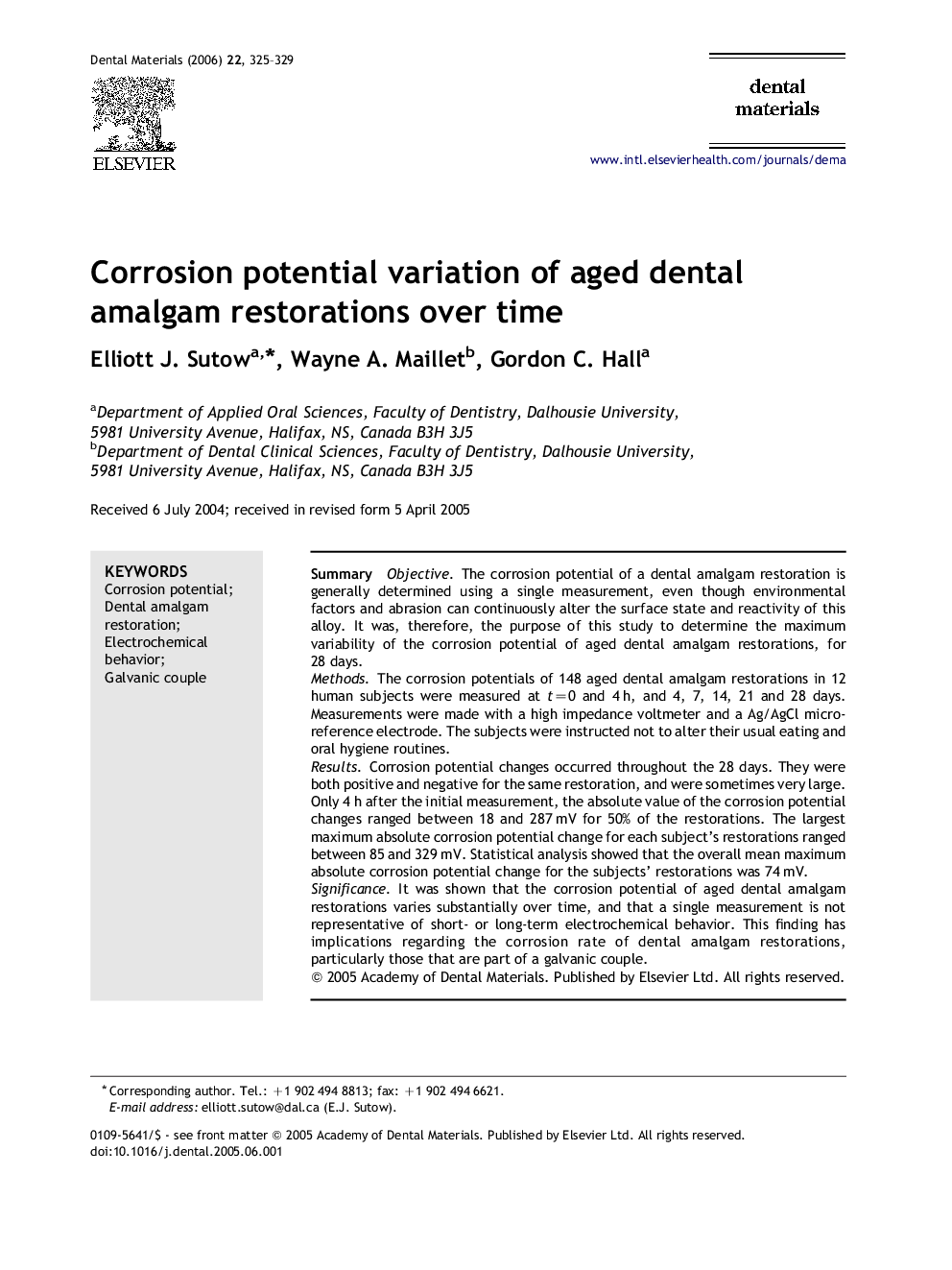| Article ID | Journal | Published Year | Pages | File Type |
|---|---|---|---|---|
| 1423451 | Dental Materials | 2006 | 5 Pages |
SummaryObjectiveThe corrosion potential of a dental amalgam restoration is generally determined using a single measurement, even though environmental factors and abrasion can continuously alter the surface state and reactivity of this alloy. It was, therefore, the purpose of this study to determine the maximum variability of the corrosion potential of aged dental amalgam restorations, for 28 days.MethodsThe corrosion potentials of 148 aged dental amalgam restorations in 12 human subjects were measured at t=0 and 4 h, and 4, 7, 14, 21 and 28 days. Measurements were made with a high impedance voltmeter and a Ag/AgCl micro-reference electrode. The subjects were instructed not to alter their usual eating and oral hygiene routines.ResultsCorrosion potential changes occurred throughout the 28 days. They were both positive and negative for the same restoration, and were sometimes very large. Only 4 h after the initial measurement, the absolute value of the corrosion potential changes ranged between 18 and 287 mV for 50% of the restorations. The largest maximum absolute corrosion potential change for each subject's restorations ranged between 85 and 329 mV. Statistical analysis showed that the overall mean maximum absolute corrosion potential change for the subjects' restorations was 74 mV.SignificanceIt was shown that the corrosion potential of aged dental amalgam restorations varies substantially over time, and that a single measurement is not representative of short- or long-term electrochemical behavior. This finding has implications regarding the corrosion rate of dental amalgam restorations, particularly those that are part of a galvanic couple.
